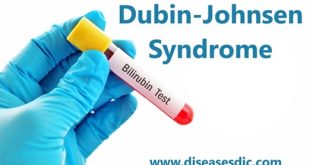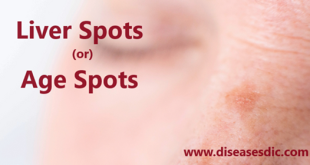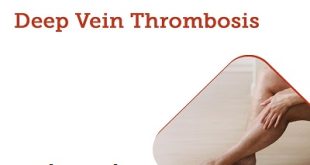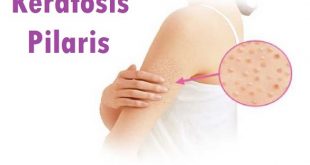Overview – Dyshidrotic Eczema
Dyshidrotic eczema is an ongoing (chronic) skin condition. It is also called as pompholyx. It causes a burning, itching feeling. Severe dyshidrotic eczema may also cause a blistering rash. It can affect your palms, the sides of your fingers, and the soles of your feet. It’s most common in people in their 20s, 30s, and 40s. But it can happen at any age.
Skin has several layers. The outer layer is the epidermis. Under this is the dermis. The dermis contains blood vessels, nerve endings, hair roots, and sweat glands. With eczema, your skin becomes inflamed. Inflammatory cells of your immune system invade the epidermis. They irritate and destroy some of the tissues there. Eczema is common. It’s also known as atopic dermatitis.
Dyshidrotic eczema is a certain form of this skin inflammation. It can cause mild to severe symptoms. In some cases, symptoms go away in a few weeks with no treatment or just with using hand lotion. More often, it happens over many months or years.
What causes Dyshidrotic Eczema or pompholyx?
It’s not clear exactly what causes pompholyx, but it may be triggered or made worse by:
- A fungal skin infection – this may be on the hands or at a distant site from the blisters (such as in between the toes) and will need treating
- A reaction to something that has touched your skin – such as certain metals (particularly nickel), detergents, household chemicals, soap, shampoo, cosmetic products or perfume
- Stress
- Sweating – pompholyx is more common in spring and summer, in warmer climates, and in people with excessive sweating (hyperhidrosis)
Risk factors
Women are twice as likely as men to experience dyshidrotic eczema, according to the National Eczema Association. Those aged 20 to 40 are also more likely to have this condition.
Known risk factors for dyshidrotic eczema include:
- A family history of dyshidrotic eczema
- A history of certain medical conditions, including atopic dermatitis, contact dermatitis, and hay fever
- An increase in outdoor temperatures during the spring or summer
- Periods of severe stress
- Jobs or hobbies that involve having wet hands or feet for long periods of time
A person receiving intravenous immunoglobulin therapy is also at a greater risk of developing dyshidrotic eczema. This therapy involves injecting specific antibodies into the veins to help a person fight a particular virus or bacteria.
Dyshidrotic Eczema Symptoms
The small, itchy blisters are the most noticeable sign of dyshidrotic eczema. These usually pop up in clusters. You may also have:
- Itching or a burning pain before blisters appear
- Blisters on the edges of your fingers, toes, palms, and soles of your feet
- Red, cracked skin
- Sweaty skin around the blisters
- Nails that thicken and change colors
The blisters often go away in 2 to 3 weeks. But the skin underneath can be red and tender for a while.
Dyshidrotic eczema can be mild or severe. If you have a severe case that affects your feet, the blisters can make it hard to walk. Blisters on your hands can make it hard to do things like cook, type, or wash dishes.
Sometimes, the blisters can get infected, especially if you scratch them a lot. Signs that you have an infection include:
- Pain
- Swelling
- Crusting
- Pus in the blisters
Complications
- Secondary bacterial infection of dyshidrotic eczema vesicles or bullae can result in cellulitis, lymphangitis, and septicemia (rare).
- Dystrophic nail changes may develop, with the occurrence of transverse ridging, thickening, discoloration, and pitting.
- Dyshidrotic eczema has no associated mortality, although some severe cases can become debilitating.
- A 2015 study determined that dyshidrosis is a risk factor in the development of herpes zoster.
How is dyshidrotic eczema diagnosed?
You may be diagnosed by a general healthcare provider or a dermatologist. A dermatologist is a healthcare provider who specializes in skin diseases.
Your healthcare provider will ask about your health history and your symptoms. Tell him or her about contact you’ve had to possible irritants. You will also have a physical exam. Your provider will need to make sure your symptoms aren’t caused by other conditions. These may include allergic contact dermatitis, ringworm, herpes, or a rare autoimmune disease. You may also have tests such as:
- Skin scraping or biopsy. This is done to check for infection.
- Patch skin testing. This test looks for allergic causes.
- Blood tests. These are done to check for an autoimmune cause.
How is dyshidrotic eczema treated?
There are a number of ways that a dermatologist can treat dyshidrotic eczema. The severity of your outbreak and other factors determine which treatments they will suggest. It also may be necessary to try more than one treatment before finding the right one for you.
Medications or medical treatments
For mild outbreaks, medications include corticosteroid cream or ointment that you apply directly to your skin. For more severe outbreaks, you may be prescribed a topical steroid, steroid injection, or pill.
Other medical treatments used are:
- UV light treatments
- Draining large blisters
- Antihistamines
- Various anti-itch creams
- Immune-suppressing ointments, such as Protopic and Elidel (this is a rare treatment option)
If your skin becomes infected, then you will also be prescribed antibiotics or other medications to treat the infection.
Over the counter
If you’re having a mild outbreak of dyshidrotic eczema, your doctor may prescribe antihistamines such as Claritin or Benadryl to help decrease your symptoms.
Home treatments
Soaking your hands and feet in cool water or applying wet, cold compresses for 15 minutes at a time, two to four times a day, can help reduce the discomfort associated with itchy skin.
Your doctor may recommend that you apply an ointment or rich moisturizer after you use compresses. A moisturizer may also help with the dryness, and therefore reduce some itching as well.
These moisturizers may include:
- Petroleum jelly, such as Vaseline
- Heavy creams, such as Lubriderm or Eucerin
- Mineral oil
- Soaking with witch hazel
Diet
Changing your diet may help if medications don’t seem to be keeping up with flare-ups. Since it is believed that a nickel or cobalt allergy can cause eczema, removing foods that contain these may help.
Some have said that adding vitamin A to your diet will help, but be sure to ask your doctor before doing so.
Treatment for feet
Dyshidrosis can also occur on the soles of your feet, although it’s not as common as on your fingers or the palms of your hands. The treatment for your feet is similar to the treatment for other areas.
To avoid making your pain and itching worse, try not to scratch or break your blisters. Although it’s important to wash your hands regularly, you may want to avoid extensive contact with water, such as frequent hand-washing.
You should also avoid using products that can irritate your skin, such as perfumed lotions and dishwashing soap.
Prevention of dyshidrotic eczema
While there is no sure way of preventing an eczema outbreak, a good skincare routine can help to protect the skin from future flare-ups.
Ways to prevent dyshidrotic eczema include:
- Consistently applying moisturizer soon after getting out of the shower or bath. This can prevent moisture loss and excessive dryness.
- Wearing soft, loose clothing made of natural fibers, such as cotton. Avoid overly scratchy or non-breathable materials, including wool.
- Refraining from scratching or itching, as this can break the skin and worsen the condition.
- Reducing exposure to allergens, such as pet dander and pollen. Washing pets with dander-reducing pet shampoos may reduce allergy-related flare-ups. These shampoos are available online.
- Using a humidifier, especially when the air is cold and dry. This adds moisture to the air, which protects the skin from drying out. Humidifiers are available to buy online.
 Diseases Treatments Dictionary This is complete solution to read all diseases treatments Which covers Prevention, Causes, Symptoms, Medical Terms, Drugs, Prescription, Natural Remedies with cures and Treatments. Most of the common diseases were listed in names, split with categories.
Diseases Treatments Dictionary This is complete solution to read all diseases treatments Which covers Prevention, Causes, Symptoms, Medical Terms, Drugs, Prescription, Natural Remedies with cures and Treatments. Most of the common diseases were listed in names, split with categories.








Good day, I have cracked pealing off heals and under my right foot same and itching always. Is this winter or athlete feet. I also have toe nsil fnus for almost 13 years, tried so many products but nothing helps. The Drs gave me some medication that could damage my liver too and nothing helped. Please help me with information on what I should do.
I have the eczema at my back and really need help to clear it please ?